“Banff National Park is one of the world’s most visited national parks – and it’s only getting more popular. The challenge isn’t the number of people, it’s the number of cars.” — Christie Pashby
Banff National Park is an iconic part of Canadian identity and its popularity continues to rise. As Canada’s oldest and most-visited national park welcomes more people each year, the challenge becomes clearer: how to preserve the landscape, maintain access, and ensure positive visitor experiences. One of the biggest hurdles? Traffic.
In this episode of Travel Beyond, Christie Pashby, Communications Director at Banff & Lake Louise Tourism, joins host David Archer to explore how the region is responding with innovation, collaboration, and a firm belief that visitors can be part of the solution.
“For the last decade, we’ve been increasing mass transit options,” says Pashby. “And every year, it gets a little easier for visitors to leave their cars at home.” While long-haul international travellers tend to plan ahead and often discover they don’t need a rental car, encouraging the same shift among day-trippers from Calgary and surrounding areas presents a unique challenge. Many of these visitors are longtime fans of the park who are used to spontaneous getaways, not structured travel planning.
To shift this behaviour, Banff & Lake Louise Tourism, Parks Canada, and the Town of Banff have teamed up to launch Transportation Shift, a campaign aimed at encouraging transit use and reducing congestion. A standout initiative within that campaign is “Shift Into Park Mode”. This clever call to action encourages visitors to not only park their vehicles but to shift their mindset.
“Park mode is different from mall mode,” says Pashby. “It’s about making a conscious decision to plan ahead so you can have a better experience. We want people to focus on why they’re coming here: To feel better, connect with nature, and take that feeling home with them.”
From free local bus service to guided shuttle experiences and expanded infrastructure, the collaborative effort is making an impact. In fact, the Banff townsite saw a 17% reduction in vehicles, and public transit use is up more than 11% year over year.
The campaign’s vision, says Pashby, goes beyond transportation. It’s about helping visitors feel connected to the place and recognize their role as stewards of it. “This place is worth planning for. And worth protecting.”
In this episode, you’ll learn:
- Why Banff National Park’s transportation strategy focuses on changing behaviour, not reducing visitation.
- How the “Shift into Park Mode” initiative reframes planning ahead as part of the park experience.
- Why international visitors are adapting faster than regional ones.
- How local partnerships are building a sustainable transit ecosystem.
- About Banff’s approach to tourism leadership and collaboration.
Subscribe to Travel Beyond through Apple Podcasts, Spotify, or your favourite podcast player.
Show notes:
How to “Shift into Park Mode”: Banff is asking visitors to rethink road trips and park their cars before entering the park. How to get to Banff from Calgary →
Leading Tourism for good: BLLT CEO Leslie Bruce shares the 10-year vision behind Banff’s sustainable tourism evolution. Read the interview →
Behaviour Change in Action: How Destination Think helped shape a 2017 communications plan to encourage more visitors to use mass transit to explore Banff National Park: Explore the case study →
Episode transcript
Christie Pashby: The biggest lever that the town of Banff can pull in terms of reducing its carbon emissions is by influencing the visitors and reducing the number of vehicles that people bring into the park. It’s better for our community. There’s less congestion for the locals. It’s easier for people to move around, and generally we see everybody’s in a better mood. The ripple effect of that is that they’re able to be more focused on what they’re here to do and hopefully take home with them that this place exists and that it’s worth fighting for and stewarding.
David Archer: Welcome to Travel Beyond. I’m David Archer from Destination Think recording from Haida Gwaii, the territory of the Haida Nation off the north coast of British Columbia in Canada. On this show, we look at travel’s role in making a better world, and we highlight leading destinations and change makers. Our guests are taking local action that the world can learn from.
They’re helping to regenerate ecosystems, communities, and economies, and they’re often making positive change happen from the bottom up. Many of the voices we’ve highlighted are part of the Destination Think Collective, which is a peer group of more than 20 ambitious forward-thinking destinations working toward a better future for travel and the planet.
Today’s episode is all about the positive changes happening around transportation in Banff National Park. The park is part of Canada’s psyche, says today’s guest. And as someone who grew up nearby, I’d say that’s accurate. It’s the country’s oldest national park and its most visited, located in the Rocky Mountains.
And as you might expect, that popularity comes with some particular kinds of trade-offs for a place devoted to both protecting nature and enabling access to it all year round. Traffic congestion is one issue the park is working through and building some solutions for, and there’s been a steady effort over the last decade to encourage people to leave their vehicles at home and enjoy the trip without sitting in traffic.
Solutions include shuttle services and buses within the park and access by bus from the city of Calgary to the park as well. And this has led to some big changes in how people are travelling. Our guest is Christie Pashby, the Director of Communications at Banff and Lake Louise Tourism. Christie mentioned that a coordinated effort between her organization, Parks Canada and the town of Banff has reduced the number of vehicles entering the town site by 17% in 2024.
Ridership on Parks Canada shuttles and the town of Banff’s local transit network is up year over year as well by quite a lot. So if you’re visiting Banff, taking the bus might be one of the best things you can do for both the environment and for your own enjoyment of the Rocky Mountains. It just might mean breaking some old habits.
And to that end, Banff and Lake Louise Tourism is asking people to plan ahead and shift into park mode when they visit. So what does that mean and what’s next for Banff National Park? To tell us all about park mode and about how the commitment to providing sustainable access is being received on the roads, here’s my conversation with Christie Pashby.
Christie Pashby: My name’s Christie Pashby. I’ve been living here on Treaty Seven Territory for 25 years, and I’ve worked in and around the tourism industry my whole career. Currently I’m the Communications Director at Banff and Lake Louise Tourism. I oversee the team that works on engagement, strategy, communications, and community sustainability. It’s my job to really think about how the tourism industry engages with this place and how visitors can connect with it in a meaningful way. I have colleagues that work on the marketing of the destination, and I don’t do that directly.
David Archer: Okay. So you’re thinking about sustainability a lot and how people interact with the park when they arrive, that sort of thing.
Christie Pashby: Mm-hmm. And how to get the most out of their time here.
David Archer: Perfect. I also noticed that you are an author and you’ve written a little bit about travel as well. Can you tell me about that and a little bit about your background?
Christie Pashby: Yes. My background is in journalism. I have a journalism degree. My first job was working as a fixer and a reporter in Central America where I was working on the early days of ecotourism back then, late 1990s. And then I started working for Frommer’s Travel Guide books, and I wrote guidebooks for them for, I guess, 25 years now. My first one was the Banff and Jasper National Parks Guidebook. And so I’ve written a bunch in Western Canada and South America for them. And yeah, it’s still happening. They’re still publishing those books. I’m happy to hear that people are still buying them.
David Archer: Amazing. So you’re quite embedded in the travel world.
Christie Pashby: Yes. I ran a guiding business in Patagonia for a couple of decades, lived down in Patagonia for a while, and then I came back and worked in the marketing department for one of the biggest tourism operators here. I did some consulting work before coming over to Banff and Lake Louise Tourism. So it feels in many ways like I’ve come home to where I am right now. Yeah. It’s a challenging time for everybody in every industry, I think, in the world. But it’s definitely not boring, this work.
David Archer: Certainly not, no. What, thinking about the park a little bit, what is one thing you always take friends to do when they visit you?
Christie Pashby: Well, the best days for me are Sundays skiing. Everybody in Banff and Lake Louise has to choose where they want to ski. We’ve got three of the world’s greatest ski resorts here. I’m a Lake Louise person, so I spend basically every Sunday afternoon ripping it up there with my daughter and our friends. It’s the best place. You look all around, all around, there’s no development. It’s incredibly pristine, and yet we have outstanding ski resorts with endless terrain. It’s just so good to be outside. I just had some friends visit from Toronto and they’ve skied all over the place and they just couldn’t believe the scenery here. It really is unique. So yeah, another thing I love about ski season is you just know what you’re going to do every weekend. You don’t have to be like, what should we do this weekend? The bag’s already packed. You just go skiing, and yeah, it’s great. It’s a great place for that. It’s a great place to raise kids too.
David Archer: That’s great. And we know all about skiing in the wintertime. Can you describe the park to someone who’s never been there? What are the other seasons like?
Christie Pashby: Well, spring is kind of a non-existent thing here. It happens usually in early June. We switch from winter to summer in a day, but spring skiing happens. We ski right until the May long weekend. Summer is very popular, and we’ll talk about that a little bit more, a little bit later, I’m sure. But you know, the best things to do in the summer are endless: hiking, climbing, paddling. My favourite thing is mountain biking. Every day there’s a choose your own adventure kind of attitude about life here. It’s thriving in the summer, but it’s also busy, busy, busy in the summer. Yeah. So we all really look forward to the fall when things quiet down and the trails are in great condition. September is my favourite month here. It’s the best. September’s almost always beautiful weather here, and the larches are turning gold and the aspens are yellow. Yeah, the trails are quiet and in great condition. Yeah. Everybody can take a bit of a breath in September and early October, and then the snow comes around and off we go again with the ski season.
David Archer: You’re describing some of my Thanksgiving family road trips, I think. Cool. You also mentioned something—what was special about the destination is that it’s a good place to raise kids. Can you tell me a little bit about that and why that is?
Christie Pashby: Yeah. I grew up in Toronto right in the heart of the city, and I actually just was there this weekend for a long weekend. I took my daughter, and you know, as much fun as it is to ride the subway and see the realities of urban living, it’s just incredible to be able to raise a kid in a town like this where there’s so much freedom and they can just be on their own unsupervised, exploring the wilderness. They learn from an early age about human-wildlife coexistence and about bear safety and safety that has to do with the conditions of living in the mountains. I think they take it for granted, but there’s so much to do with your kids outside in your spare time. So I find that parents and kids have really strong bonds here, and they really develop time together in the mountains. And that’s what brought so many of us to live here and keeps us here. There are other challenges about raising a family here—affordability, housing, et cetera—but the kids are extremely privileged.
David Archer: Definitely. It’s such a gorgeous location with opportunity for outdoors. And when you’re… so, are you located in the park itself?
Christie Pashby: I live in Canmore. I’ve lived in Canmore since 2000, 25 years, so just outside the park.
David Archer: So, you know, you’re kind of at the doorstep of this, as you were describing before, sort of like the endless terrain environment with no development. Let’s talk a little bit about what the National Park is. Why do we have national parks and how would you describe its mission?
Christie Pashby: Well, Parks Canada has a mission to protect the ecological integrity of lands and then promote the cultural understanding of them. In terms of Banff, it was the first national park in Canada, 1885 it was founded. It’s interesting to sort of analyse how the journey of Parks Canada has evolved over the years. They started—the first thing was to bring in tourists to help cover the costs of the railway. It was a bit of a money-making endeavour way back at the beginning in the 1880s. And then their mandate has evolved over time. So yeah, there’s a lot of national parks in Canada. I don’t have the stats for how many; it’s growing quickly, the number of parks. But Banff is—I don’t want to say the most important because they’re all important—but Banff is a bit of a juggernaut in the national park system, by far the most visited, by far the most income-generating of the parks. And yeah, the one that is in everybody’s psyche, I think. It’s part of the Canadian identity. A vision of Lake Louise is something we all grow up with and feel connected to whether we’ve been here or not. Just knowing that a place like this exists is a nation-building exercise that we all kind of have in common, and maybe that’s why it’s so popular.
David Archer: Can you tell me about who tends to visit Banff? What are the visitors like across different seasons? Where are they coming from?
Christie Pashby: The summers are by far our most popular season. I think there’s a lot of people that come once in a lifetime as a bucket list trip, and they come from all over the world. We have a lot of visitors from Germany, Australia, the UK, France, and Asia are all target audiences. Americans come; a lot of them come once in a lifetime. Also, some of them will come regularly. Long-haul Canadians—again, every mum and dad across Canada wants to bring their kids to Banff on a summer holiday. I think it’s a rite of passage. So it’s a pretty diverse situation in the summertime. And then in the winter, we’re trying really to grow that long-haul visitation in the winter and to change people’s mindset about Banff being only a summer place. We have a lot of room to grow in winter in terms of availability and things that we can offer for visitors. And then, you know, there’s a whole other bucket of visitors who are regional day trippers that are coming from Calgary and the Calgary area who come over and over and over again.
David Archer: Right. Calgary is about what, a 90-minute drive?
Christie Pashby: 90-minute drive away. It’s the fastest-growing city in Canada, so there’s a lot of pressure on Banff from that.
David Archer: People who suddenly have new access to parks.
Christie Pashby: People—you grew up in Calgary.
David Archer: I grew up in Red Deer, so not that far.
Christie Pashby: Red Deer. I think they’ve surveyed—well, I know I worked on this project—we surveyed people in Calgary about what do they love most about living in Calgary, and they all say the mountains, even though they’re 90 minutes away. So they love it. They think it’s their backyard, which, you know, sort of is. And so lots of people come every single weekend to come out and go skiing or whatever it is. They have a place in Canmore; they come to the mountains very regularly. And then there’s all the new people, new Canadians or new Albertans that are just, you know, exploring for the first time as well.
David Archer: Let’s talk about transportation a little bit and maybe the Calgary trip into Banff is a good place to start. But I wanted to talk about some of the responsible ways of travel that are starting to be more used and promoted in the park, and I know that’s been a long-running area of collaboration within Banff National Park. Can you tell me about some of the goals that exist around transportation in the park? What’s happening these days?
Christie Pashby: As the mayor of Banff says, we have a car problem, not a people problem. Okay. And so the challenge is there’s just not enough room for more cars in Banff National Park. Banff, the town of Banff, you know, is legislated to serve visitors and it exists within a national park. So everything that happens within the town of Banff and the hamlet of Lake Louise is essentially governed by Parks Canada. And we have already reached the commercial cap for these places. So you can’t just build a parking lot wherever you want because there’s more cars coming. And so parking is in high demand, shall we say. Yeah, especially in summer. So we have solutions with some transit offerings and lots of transit offerings actually, to get people to not bring their cars. And you know, what we’re trying to do is build awareness of what those options are. Part of that is about setting expectations about what it’s going to be like when they come. So continuing to be inviting people to come, but, you know, the reality is that it could be very frustrating driving around and around looking for a parking spot. That’s not what we want anybody to do.
David Archer: Right. Nobody—
Christie Pashby: Nobody wants to come to Banff and drive around looking for a parking spot. And so the decision has to start early on about how I can avoid that. And then how can we as a destination get in front of those folks with the information they need and make it easy for them to make a better choice. And so for Calgarians, it really starts with, you know, leaving their front door. Ideally not hopping in a car and taking a bus from the city of Calgary, and there’s a lot of operators now offering those shuttles. And then if that’s asking too much, can you carpool? Can you come in off-peak hours? And then if you have to drive, you know, as soon as you get here, park your car and leave the car behind and move around the destination on shuttles, by bus, by foot, by bike, any other way besides driving around.
David Archer: You mentioned shuttles. Are those tied to various operators around the park or are businesses getting involved?
Christie Pashby: There’s three different opportunities for shuttles. It’s part of the transit ecosystem we have. There’s the public transit offering, the Roam shuttles, which is a public transportation agency co-managed by town of Banff and town of Canmore together. And they offer shuttles to most of the important and popular places like Lake Louise, Lake Minnewanka, Johnston Canyon, up the Sulphur Mountain gondola. And then there’s commuters within Banff. So you could, hypothetically or ideally, park your RV at a campground and take a bus right from that campground anywhere you need to go in the park through the Roam transit. And then Parks Canada operates the shuttles to Lake Louise and Moraine Lake. Again, they’re all staged out of a giant parking lot at the ski resort. They need to be booked in ahead of time and they’re really popular, very popular. They sell out really quickly. And then there’s a third category, which is the private commercial vehicle operators. And there’s more and more of those coming online every week, with new tour operators offering new tours to help, first of all, to help people get where they want to go, and then ideally to help deepen and improve experience as they get there as well. And then, you know, there’s good biking infrastructure, so we’re always encouraging biking first. It’s definitely the greenest alternative.
David Archer: Do you think there was a turning point, or how long have these improvements been happening, in terms of shuttles and additional buses and that sort of thing?
Christie Pashby: So the shuttles have been around 10 years or so, the Roam shuttles, but they’ve been expanding year over year. The Parks Canada shuttles are relatively new, only a few years. They’ve closed, for example, Moraine Lake so that it can only be accessed by shuttle. And, you know, similar things are going to be coming in the future for other popular areas of the park. And so the commercial ones are picking up the slack because those other two are generally full. And so we’ve reached a kind of limit in terms of the public transit, so private options are growing. And they’re frankly really good. You get a guided experience. You can go at the time you want to go. You learn a lot more about the place. So I highly recommend those.
David Archer: So positive experiences for travellers is one of the big benefits of this. Are there other benefits to, you know, increasing the availability of mass transit?
Christie Pashby: Yeah, well obviously there’s the GHG goals, right? The town of Banff knows that its GHG goals are heavily outweighed by visitor vehicles. And so, you know, the biggest lever that the town of Banff can pull in terms of reducing its carbon emissions is by influencing the visitors and reducing the number of vehicles that people bring into the park. And, you know, those vehicles have a burden on our community in other ways too. So it’s better for our community. There’s less congestion for the locals; it’s easier for people to move around. And generally we see everybody’s in a better mood. And that helps with our overall experience. People aren’t cranky if they’ve planned ahead and booked the shuttle that they want and the day is flowing smoothly for them. So yeah. And then the ripple effect of that is that they’re able to be more focused on what they’re here to do, which is, you know, experience this spectacular place and feel how it can transform their lives and hopefully take home with them that this place exists and that it’s worth fighting for and stewarding.
David Archer: Speaking of stewarding, I mean, would you say that the transportation options growing are reflecting local values as well in some ways?
Christie Pashby: Definitely, definitely. I mean, locally, to live here, you have to choose this lifestyle. It’s not always the easiest place to live, and you have to really want to be here. And you want to be here because of the way you feel living in this spectacular landscape. And so we’re really working to help visitors connect with that too, because it feels good. You feel better. Right. And so the locals feel better when the visitors feel better, and the visitors feel better when they know the locals are feeling better. And transportation’s, you know, one element of that, but it’s critical in terms of the quality of life for people living in Banff and Lake Louise. You know, right now we have the Roam transit, which is free for locals as well as serving visitors. And so sometimes the buses are really crowded, but they’re with commuters going to work every day. And so that’s a real benefit that visitors are getting to kind of piggyback on what works for locals and vice versa. Locals are getting free transit because the visitors are helping to support that.
David Archer: Absolutely. It’s a good synergy or a way to help everyone at the same time.
Christie Pashby: But things are getting full, so the need is only increasing.
David Archer: It’s only increasing. Yeah.
Christie Pashby: It really feels like it’s coming in, getting bigger and bigger, and so it’s hard to imagine the future. I know you asked me in the preparation to kind of imagine what the future of this would look like. Yeah. I mean, I think to jump to that question, you know, what do we want it to look like? Well, we want our visitors in the future to be part of the solution. So they’re planning ahead; they’re finding it convenient and easy for them to plan ahead. There’s some kind of digital network that allows them to find what they want and book it and confirm it without too much confusion and frustration. And then they’re leaving their vehicles at home, so they see that coming to Banff is easy and it’s convenient to take these transit options. And then, you know, there’s just fewer cars around.
David Archer: Right.
Christie Pashby: Basically we really recommend you make these choices now so that you have a better experience. And we’re using a creative feature that’s called “shift into park mode,” which is a bit of a play on parking—literally parking your car and then shifting into the park mode on your vehicle—and also the state of mind. When you’re starting to think about coming to Banff National Park, you need to sort of shift your channel and your frequency in your brain and go into park mode, which is different from home mode. You know, it’s different than going to mall mode. It’s park mode, right?
David Archer: You can spontaneously go to the mall anytime, but park mode means—
Christie Pashby: You’ve got to plan ahead, right? And so we’re playing with that right now. What does park mode mean? And I think it helps us talk not just about transit in isolation. The transit decision is part of a bigger decision about why you’re coming here, you know, what you’re looking for when you come here, and how your planning can help ensure that you get the most out of your time here and leave happy, which is what we ultimately want.
David Archer: What else can visitors do aside from, you know, leaving their car at home perhaps, to help you out with these visions?
Christie Pashby: Well, stand by. We’re working on some new campaigns about what that means, how to make, you know, sort of good choices to help them connect more meaningfully with the place. But, you know, there’s certain things that we have, for example, the waste issue. There’s an incredible number of coffee cups generated every day on Banff Avenue. Like, it’s insane how many people come to Banff and buy a coffee and throw away the coffee cup. And without thinking that then becomes a burden on the local municipality to deal with that coffee cup. So we do have a cool program called Banff Borrows, where you can get a reusable mug for free and you just have to scan it and then return it when you’re done. And the long-term impacts of that can make a real change in how our town manages the landfill dilemma that we have.
David Archer: Is there any other topic that you wanted to talk about that I’ve missed so far?
Christie Pashby: Maybe we could just take a couple of minutes to talk about Moraine Lake.
David Archer: Sure. Tell me about Moraine Lake.
Christie Pashby: Moraine Lake is a good example of all of this transportation stuff we’re talking about. Moraine Lake, if you don’t know, is a lake that’s just south of Lake Louise. It was famous for being on the Canadian $20 bill for a long time, and it’s that iconic image of the Valley of the Ten Peaks that you see on a subway station in Montreal or something that represents Canada. If you’re in Germany, there’s a picture of Canada, there’s a good chance it’s a picture of Moraine Lake. And so a couple of years ago, Parks Canada closed the road to Moraine Lake to personal vehicle traffic and implemented a new bookable shuttle. And it’s been very, very popular and very successful. Their shuttles are basically full all summer. They release 40% coming up in a couple of weeks in April, and then the rest are available 48 hours ahead of time for booking, and they’re running at full capacity pretty much all summer long. And then if you can’t get on those, or if you would prefer, you could book a private tour. There’s a variety of different options. There’s a hop-on, hop-off double-decker bus that goes up there and down every day. There are, you know, deluxe motor coaches and smaller vans for different hiking groups and sightseeing tours that go up there. But this has changed quickly, how to get to Moraine Lake in the last three years. So, you know, in terms of the guidebook authoring, going back to what I was saying about my background, like that’s a whole new chapter. And it’s a lot for people to understand—how to book it, where to book it, how far in advance to do it. And lots of people still aren’t getting that message and they’re still showing up and being surprised that their car’s being turned away at the drive there. Yeah. So we still have a lot of work to do there, but if we could, you know, there would be room for everybody, but at the same time, we just need to limit the number of people going to that place.
David Archer: Right. It’s just a physical space issue, and then the popularity issue.
Christie Pashby: Yeah.
David Archer: Would you consider that programme a success so far?
Christie Pashby: Yes. I think that given everything that they have in terms of resourcing and expertise, Parks Canada’s done a really good job at making the most out of a very challenging situation, and they know that the solution that’s in place today for 2025 is likely going to change again for 2026. And that’s just part of the ride that we all need to be committed to—planning ahead and not expecting the unexpected year to year. The way that it was last year maybe is not the way it’s going to be next year. It’s going to take a while before anything’s fixed there, and they’re kind of coming up with the best solution that they possibly can and making sure that people that really want to go to Moraine Lake can still go to Moraine Lake. They just need to plan ahead.
David Archer: I think those are good words to end on. Thanks so much for being my guest today.
Christie Pashby: My pleasure.
David Archer: This has been Travel Beyond, presented by Destination Think. And that was Christie Pashby from Banff and Lake Louise Tourism. For more resources and show notes, visit our website at destinationthink.com. This episode was hosted, produced, and has theme music composed by David Archer. Sara Raymond de Booy is my co-producer. Lindsay Payne and Cory Price provided production support. If you like what you hear, please give us a five-star rating on whichever app you are using right now. It helps more people find us. Thank you for listening, and we’ll be back with more next week.


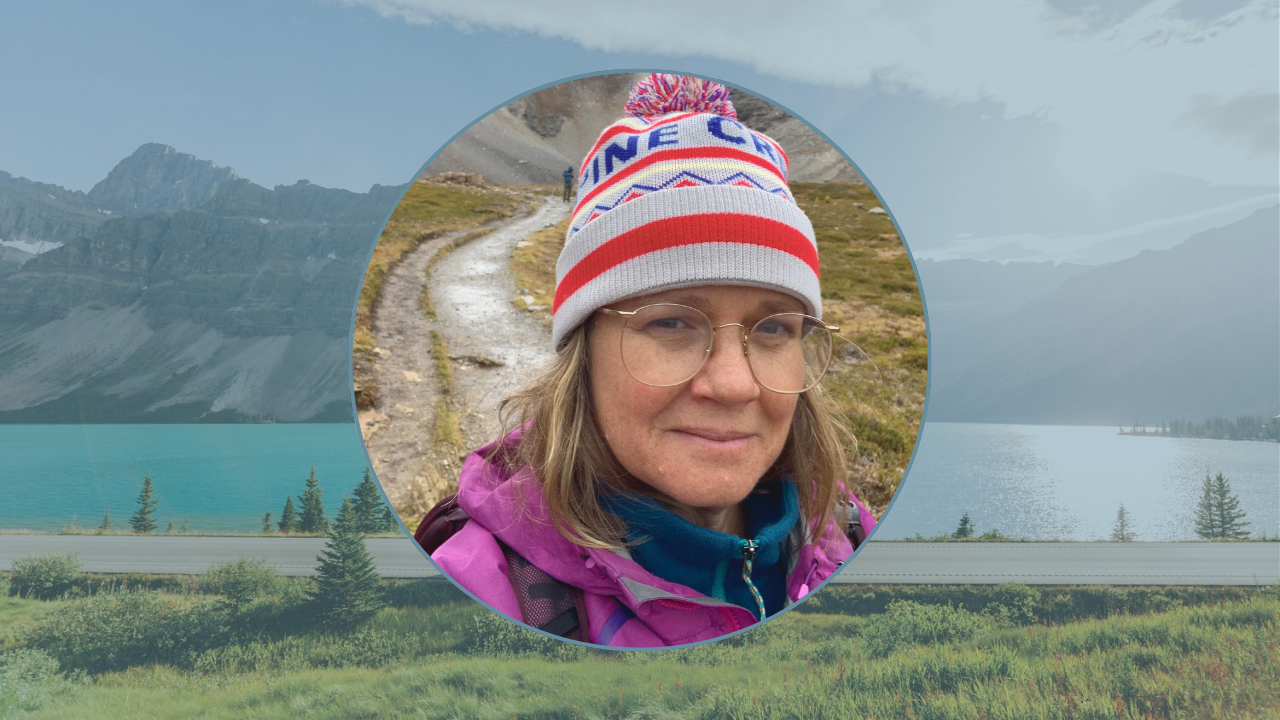
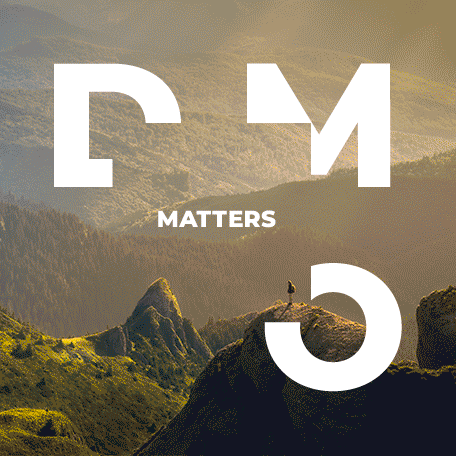
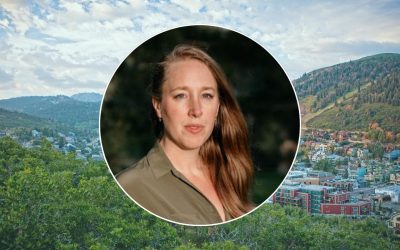
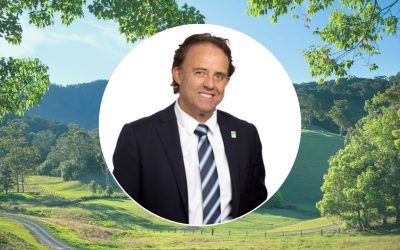
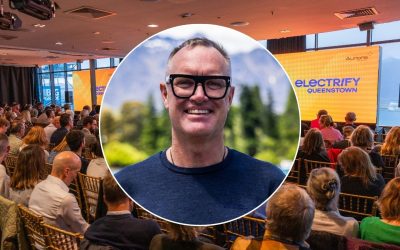
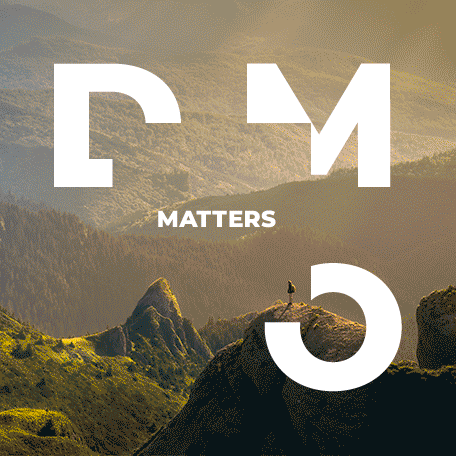


0 Comments